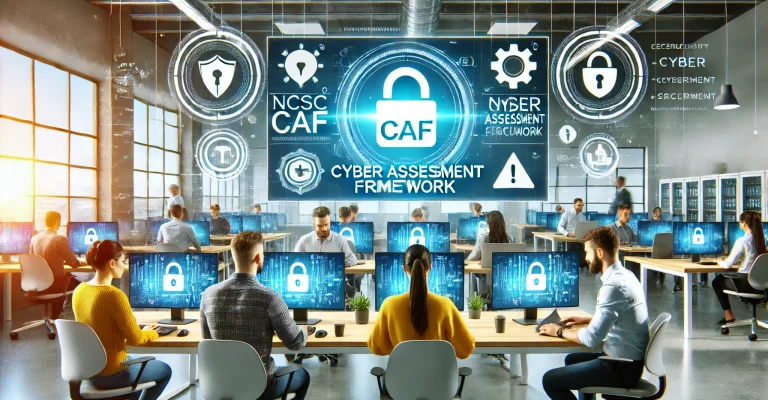Cybersecurity Collaboration Introduction
In today’s digital landscape, cybersecurity has become more critical than ever. With cyber threats on the rise and their potential for significant harm, it’s clear that no single entity can tackle these challenges alone. The key to robust cybersecurity lies in collaborative efforts between public and private sectors. This expanded article explores why such cybersecurity collaboration is crucial, highlights successful case studies, addresses challenges, and outlines a future roadmap for effective partnerships.
The Compelling Need for Collaboration
Transcending Boundaries
Cyber threats don’t respect borders or sectors. A ransomware attack on a private company can quickly affect public infrastructure, and state-sponsored cyber espionage can compromise both national security and commercial interests. This boundary-less nature of cyber threats makes isolated efforts impractical and ineffective. Collaborative efforts allow for a more comprehensive approach to identifying, preventing, and mitigating threats.
Resource Constraints
Budgetary limitations and competing priorities restrict the resources that both public and private organisations can dedicate to security. Cybersecurity collaboration allows for a more effective distribution of resources, ensuring that every dollar spent has maximum impact. By pooling resources, organisations can access a broader range of tools and technologies, improve their defensive capabilities, and leverage each other’s strengths to enhance overall security.
Velocity of Technological Change
Technology evolves rapidly, often outpacing the speed at which cybersecurity measures can be updated. Collaborative efforts enable quicker adaptation and implementation of modern security protocols, keeping up with the fast-paced technological landscape. When public and private entities work together, they can more effectively anticipate and respond to emerging threats, ensuring that their defences remain robust and up to date.
Exemplary Models of Collaboration
Public-Private Partnerships (PPP)
Public-Private Partnerships involve both sectors pooling their resources, whether it be finances, expertise, or workforce, to achieve common cybersecurity goals. Examples include joint development of cybersecurity technologies and shared cybersecurity operation centres. These partnerships can lead to innovative solutions, combining the strengths of both sectors to create more effective and efficient security measures.
Regulatory Sandbox
Government agencies can create controlled environments where private companies test new cybersecurity solutions without facing regulatory penalties. This promotes innovation while maintaining oversight and ensuring that new technologies are safe and effective. Regulatory sandboxes provide a space for experimentation and development, allowing for the rapid advancement of cybersecurity technologies and practices.
Open-Source Intelligence (OSINT)
By pooling intelligence resources, public and private sectors can better monitor and analyse cyber threats. Shared databases and analytical tools are invaluable for predictive threat analysis and proactive defence strategies. OSINT enables organisations to leverage a vast amount of publicly available information to identify potential threats, track threat actors, and develop more informed defensive strategies.
Challenges and Roadblocks
Intellectual Property Concerns
Protecting proprietary technologies and trade secrets can hinder open cybersecurity collaboration, as private companies may be wary of sharing valuable information. This concern can be mitigated through agreements that protect intellectual property while still allowing for the sharing of critical information necessary for cybersecurity efforts.
Jurisdictional Issues
Cyber threats often cross international borders, complicating collaborative efforts due to varying international laws and regulations. Effective cybersecurity collaboration requires a coordinated approach that considers these legal complexities and looks to harmonise regulations to facilitate cooperation across borders.
Public Perception
There is often public scepticism about the influence and access private corporations might gain through close collaboration with government bodies, especially regarding individual privacy concerns. Transparent communication and strict oversight can help address these concerns, ensuring that cybersecurity collaboration benefits the public without compromising privacy.
A Blueprint for Future Collaboration
Legislative Measures
Creating laws that support and encourage public-private partnerships in cybersecurity can formalise and facilitate these collaborations. Legislation should aim to remove barriers to cooperation, provide incentives for cybersecurity collaboration, and ensure that all parties have the legal framework they need to work together effectively.
Governance Models
Establishing governance structures that include representatives from both sectors ensures that interests and responsibilities are balanced and aligned. Governance models should be designed to foster trust, encourage open communication, and ensure that collaborative efforts are coordinated and effective.
Periodic Reviews and Audits
Regular evaluations of collaborative efforts can provide insights into their effectiveness and highlight areas for improvement. These reviews should involve both internal and external assessments, ensuring that collaborative initiatives remain on track and adapt to changing circumstances.
Stakeholder Engagement
Involving academia, non-profits, and community organisations in public-private cybersecurity collaborations can provide additional perspectives and resources, enriching the overall effort. Engaging a broad range of stakeholders ensures that collaborative efforts benefit from diverse expertise and are more likely to address the needs and concerns of all involved parties.
Conclusion: A Call to Action
The cybersecurity challenges we face today are too complex for any one entity to handle alone. Public-private collaboration isn’t just beneficial—it’s essential. By fostering partnerships, we can create a resilient, robust, and responsive cybersecurity infrastructure. It’s time for both sectors to move beyond traditional limitations and engage in meaningful cybersecurity collaborations to protect our digital future.
By embracing a collaborative approach, we can better anticipate and respond to cyber threats, ensuring that our digital infrastructure remains secure and resilient. The stakes are too high, and the resources too limited, to continue working in isolation. Now is the time to join forces and take collective action to safeguard our shared digital future.














